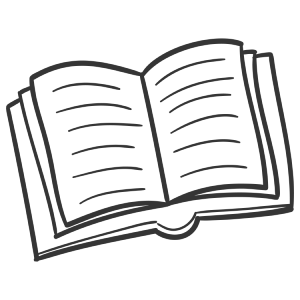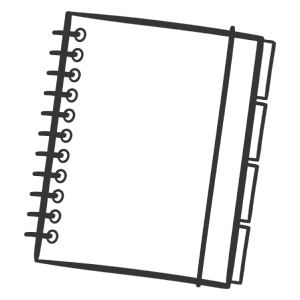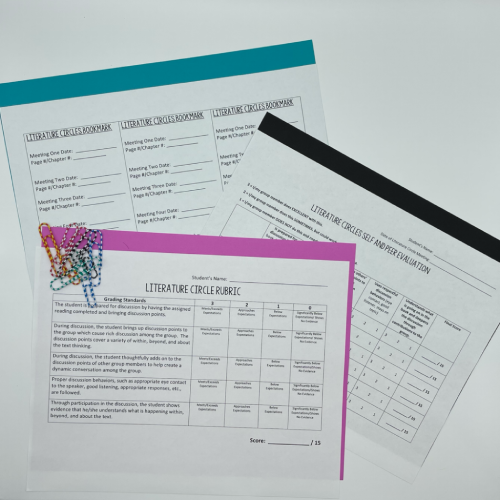I have to start the school year off with the obligatory blog post of my classroom. I am teaching 7th grade Language Arts this school year to a great group of 25 students. I am ecstatic to be their teacher and excited to teach in a fun space that I created to support reading and writing practices in my classroom. My classroom came together nicely this year with the help of my Kinship mentee who cut out endless items, KG fonts, which I used on all of my classroom signs, and of course my dear friend, the laminator.
Signs, Labels, and Bulletin Boards for a Balanced Literacy Classroom
Each day when students arrive, they are responsible for checking the board outside of my classroom to see which materials they should have on top of their desks by the time class starts. There is zero excuses for my class to have to run back to their lockers because they forgot something. Students have already adjusted to checking the board as part of their routines, and it is one of my favorite classroom organization pieces that I have implemented because it allows class to start with minimal disruptions.
The names of my students are proudly displayed on our classroom door as they walk in. I like having their names several places in the classroom because, even at the middle school level, I think it creates a sense of belonging in the classroom.
The sign out area contains lanyards with passes that say all the possible places students may need to go. I also keep a sign out sheet with all of my students’ names on it and ask them to put a tally by their name each time they leave the classroom. This helps me track if there are particular students who leave my classroom frequently.
The “pertinent information” part of the bulletin board contains our schedule, the dress code (always fun in middle school), and our PBIS expectations matrix for how to be safe, responsible, and respectful in all of the different areas of the school. I like using words in my classroom that cause students to ask what they mean and use the words often. It is a fun and easy way to build students’ vocabulary without drills and worksheets.
This area is used during independent work time for students to visit with a partner for a maximum of two minutes to brainstorm/ask a quick question. It’s the only place in the classroom where talking is allowed during independent work time besides at the guided reading table. If it is a hard minilesson concept, and I will be with a guided reading or writing group, I will sometimes designate a student expert who is capable of answering questions during independent work time.
If students would like to check a book out of my classroom library, they simply find their card pocket, write the title of the book they’re checking out on the card, and then cross the title off once the book is returned to the return bin.
As we’re reading our Interactive Read Alouds this year (we’re starting with The Tiger Rising by Kate DiCamillo which I’m slightly obsessed with this book, but we’ll get to that in a later blog post), there will be lines that stick out and stay with us as readers. When we find these lines, we’ll record them on our “Quote Worthy” bulletin board.
Using our classroom iPads, students are easily able to scan the QR codes from the signs posted in the classroom library, which will bring them to sites that will help them find their next independent reading book, help them correct their writing, or help them find the meaning of an unknown word.
Here is half of my classroom library containing all of the fiction books. The other half on the other side of the classroom contains the nonfiction books. I label my classroom library by genre, not by level. Independent reading for students should not be limited to their reading level. It is our job as teachers to teach students how to find appropriate books that meet their interests and will be accessible to them. They will never walk into a book store or public library and pick out a book based on their reading level. I choose not to put my students in that box and stereotype. The F&P level that I find for my students at the beginning of the school year when I perform the Benchmark Assessment is a teaching tool for me to best instruct my guided reading groups and work with students individually on their reading, it is NOT a label to give to students and parents for students to internalize and define themselves as readers by a level. The bins make it easy for students to take off the shelf and shuffle through each bin as needed. I do a book talk from my classroom library each day to entice students to visit it often and explore new books and genres right in our own classroom.
Classroom Library Tour Activity Free Download
The Exit Slip Bulletin Board is used at the end of class for formative assessment. I simply ask students to grab a notecard, write their name and number of the question they’re answering, and then pin their response up as they exit class that day.
I have two sets of mailboxes in my classroom, labeled by student name, for students to keep their Reader’s Notebook, Writer’s Notebook, and Word Study Notebook.
Have your students create Reader’s Notebooks and Writer’s Notebooks
Our Word Study bulletin board contains vocab words from our reading, rules about how words work, prefixes, suffixes, and Greek/Latin roots.
Missing Assignment sheets for students to fill out and tell me what they’re plan is for getting the learning evidence into me. I work with my students on responsibility and getting assignments in on time, but I will always take and assess late work because it still shows evidence of learning that I need to see. This struggle is very real with middle school students at times. I feel personal responsibility, however, to work hard at teaching organization skills and helping make plans to catch up when the organizational skills fail. The caught in expectations tallies I will blog about at a later time. 🙂
I always keep a healthy supply of reading logs, which can be added into their Reader’s Notebook anytime if they fill the previous one. Same goes for thinkmarks. They are so handy for a quick formative assessment on a variety of topics and go with any genre.
Magazines are an important staple to any classroom library. They bring in nonfiction and are a good in-between for a student who finishes an independent reading book and needs a day to find a new one.
These are the three “comfy areas” of my classroom. After the minilesson, students are selected each day to have the privilege of working in the comfy areas instead of at their desks during independent reading and writing. I keep a supply of lap desks to assist them with writing without a desk. Students love the opportunity to sit in a comfy item, and it also helps spread students out during independent reading/writing time and create movement for students. I also think rugs and real furniture add a warmth to the classroom that makes it a place students want to be and get creative in.
Here is another of my favorite organizational tips for teachers. Each day I record who was absent and what they need to make up. Then I put any handouts with the students’ names on them in the extra handouts binder. Students who were absent are responsible for checking this area first when they come back to school after an absence. Organization helps to create a “no excuses” environment. One of my biggest responsibilities as a teacher of middle school students is to create intrinsic motivation and a sense of personal responsibility for my students. Making expectations clear and consistent, and providing organizational supports helps make this a reality.
The white board, located in the front of the classroom, contains the learning target for the day. Students need to know WHY they are doing what they’re doing, and how they may use this skill in the future.
This is the area that’s used for guided reading, guided writing, literature circles, and reading/writing conferences. I keep all of the supplies I need right behind me, including binders for anecdotal notes that I take during conferring, guided reading books, lesson plans for guided reading/writing, etc. I also keep mini white boards, a white board calendar, prompting guides, and professional books that I reference while planning. What I do during whole class minilessons is important, but I feel like the true learning happens with small groups and individual students at this table. It’s my favorite place in the classroom because it’s where I see true transformation and where I learn who my students are as readers and writers.
Guided Reading Materials for Middle School Students
Guided Reading Lesson Plans for Specific Books
Everything you need to make Guided Reading Lesson Plans
This is our “Reading Inspiration Corner” which contains quotes about the importance of reading and also book selfies from my students.
Here is the full view from a few different angles. Cheers to an amazing school year!














